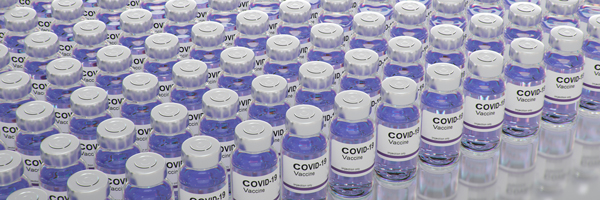This article was originally published December 28, 2020. It was updated December 8, 2021, to include information about why Pfizer is adding the buffer tromethamine (sometimes called tris) to their COVID-19 vaccines.
Question
Are COVID-19 vaccine ingredients public? Is there a way to see what they're made of?
Answer from infectious diseases expert David Brett-Major, MD, MPH
Yes, Pfizer, Moderna and Johnson & Johnson (Janssen) provided detailed information about the ingredients in their COVID-19 vaccines to the U.S. Food and Drug Administration (FDA). Read the information provided to the FDA.
The most important ingredient in both the Pfizer and Moderna vaccines is mRNA. The mRNA tells your cells how to make a protein from the coronavirus. Once your body knows how to make the protein, it can recognize COVID-19 and fight it. Learn more about how mRNA vaccines work.
The Johnson & Johnson (Janssen) vaccine uses an adenovirus rather than mRNA. An adenovirus acts as a delivery vehicle, carrying the spike protein from the coronavirus. Adenoviruses, in general, cause a cold or flu-like illness. This adenovirus, though, cannot replicate (reproduce), so the vaccine exposes the spike protein to your immune system without causing an on-going infection. It can be given to those who are immunosuppressed. The adenoviral vector (Ad26) has been used in other investigational vaccines, and approximately 200,000 people have received it.
The vaccines also contain various salts, fats and other ingredients to help your body use the mRNA. The full list of ingredients are included in the vaccine package inserts:
- View the Pfizer package insert for ages 12+
- View the Moderna package insert
- View the Johnson & Johnson package insert
If you would like to learn more about each ingredient, the National Institutes for Health (NIH) provides a service to explain medicine ingredients called PubChem. We've listed vaccine ingredients in the table below as an example.
Pfizer-BioNTech
- Active ingredient
- mRNA coding for a form of the spike protein of SARS-CoV-2
- Lipids (fats)
- (4-hydroxybutyl)azanediyl)bis(hexane-6,1-diyl)bis(2-hexyldecanoate)
- 2[(polyethylene glycol)-2000]- N,N-ditetradecylacetamide
- 1,2-distearoyl-sn-glycero-3-phosphocholine
- cholesterol
- Salts
- potassium chloride
- monobasic potassium phosphate
- sodium chloride
- dibasic sodium phosphate dihydrate
- Other
- tromethamine
- tromethamine hydrochloride
- sucrose
Moderna
- Active ingredient
- mRNA coding for a form of the spike protein of SARS-CoV-2
- Lipids (fats)
- SM-102 (Learn more about this ingredient)
- polyethylene glycol [PEG] 2000 dimyristoyl glycerol [DMG]
- cholesterol
- 1,2-distearoyl-sn-glycero-3-phosphocholine [DSPC]
- Salts
- sodium acetate
- Other
- tromethamine
- tromethamine hydrochloride
- acetic acid
- sucrose
Johnson & Johnson (Janssen)
- Active ingredient
- Recombinant, replication-incompetent adenovirus type 26 expressing the SARS-CoV-2 spike protein
- Salts
- sodium chloride
- trisodium citrate dehydrate
- citric acid monohydrate
- Other
- ethanol
- polysorbate-80
- 2-hydroxypropyl-β-cyclodextrin (HBCD)
Were tromethamine and tromethamine hydrochloride, sometimes called tris, added to the COVID-19 vaccines to prevent heart attacks?
No. Tromethamine and tromethamine hydrochloride are ingredients called buffers. These ingredients are used in many vaccines, including the Moderna COVID-19 vaccine. Buffers help stabilize vaccines so they can be stored for longer at higher temperatures. With these two new ingredients, the Pfizer vaccines can be stored in commonly available refrigerators for longer periods of time, making them easier to use in clinics.
These three vaccines do NOT include:
- Fetal cells
- Blood products, like red blood cells, white blood cells, plasma or platelets
- COVID-19 virus cells
- Mercury
- Egg
- Latex stoppers
- Pork products
- Graphene oxide
- Microchips
- Sometimes there are microchips on the outside of a syringe, so the health care professional can scan it quickly for digital records. The world's tiniest microchip is still much too big to insert into an immunization shot
- Luciferase
- Luciferase is an enzyme that produces light. It’s what makes fireflies glow. The word luciferase has roots in the Latin word lucifer, which means light-bearing. Luciferase is not an ingredient in any of the COVID-19 vaccines, but it has been used in past to visually see how viruses and vaccines interact with cells in the lab



